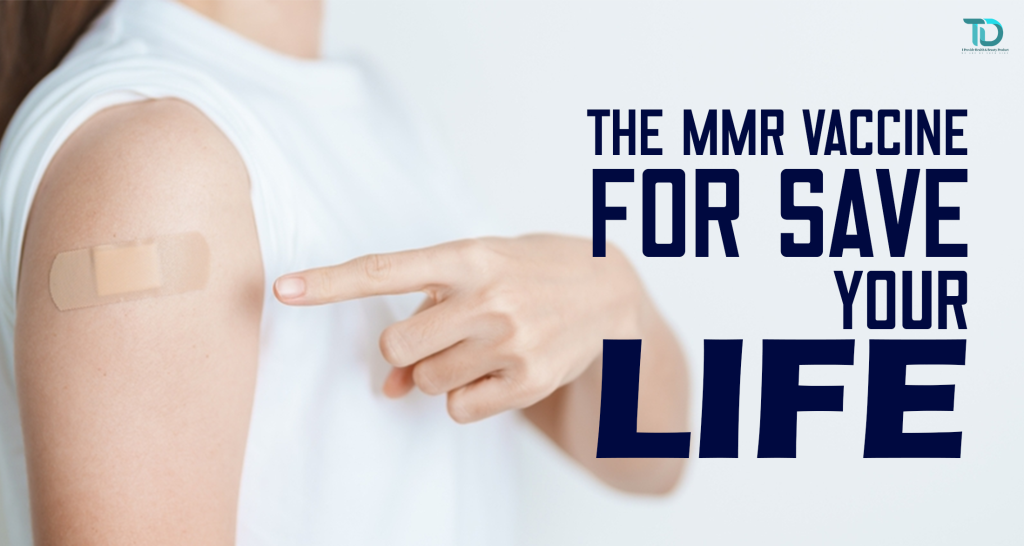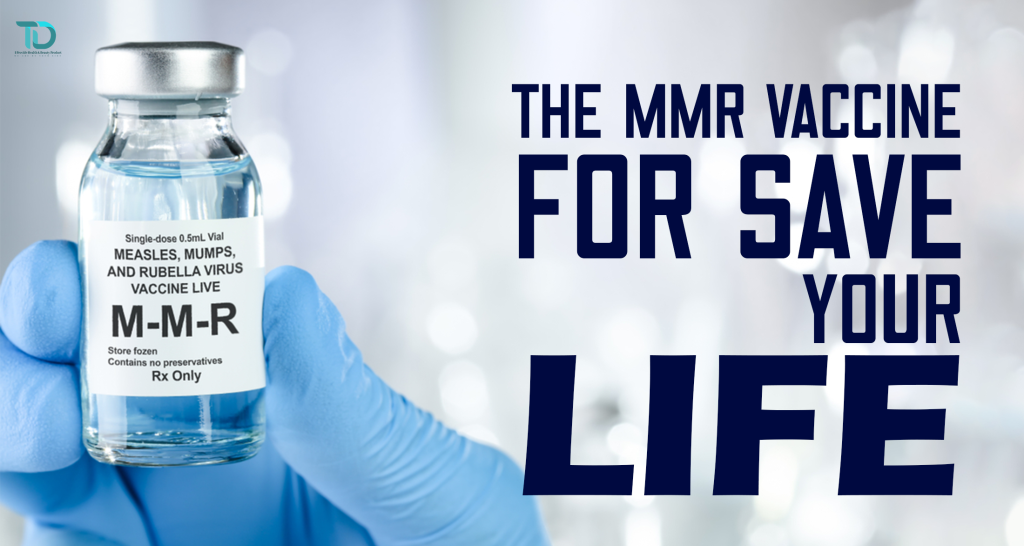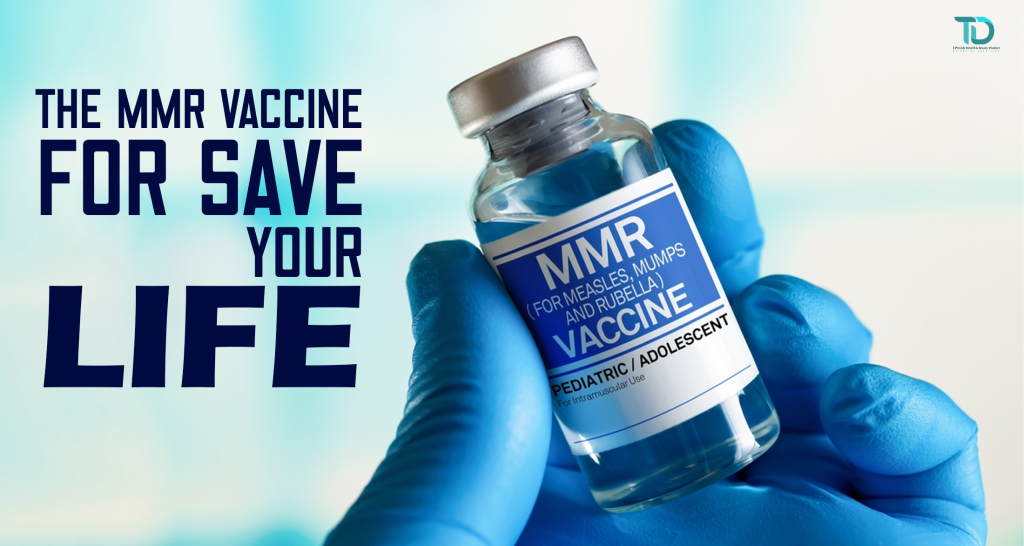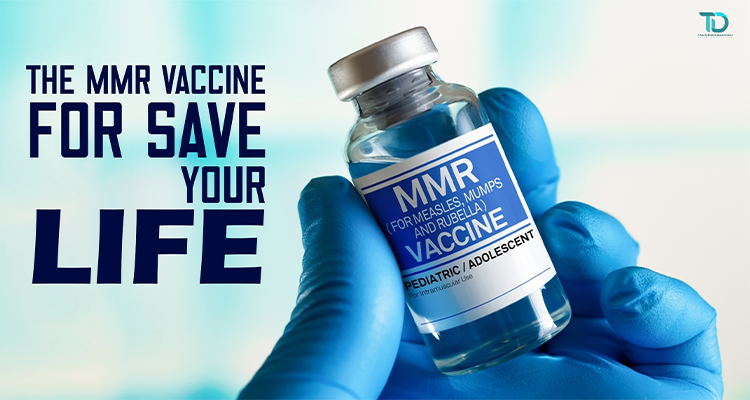Understand The MMR Vaccine
This vaccine is a combination which means it’s effective against three diseases at once, these are Measles, Mumps and Rubella. These diseases could be found in many countries across the globe however, they have become rare with the advancement in vaccinations. The MMR vaccine is effective in preventing these diseases which often lead to severe complications.
Measles
Measles is an extremely infectious viral infection. Some symptoms include fever, cough, runny-nose and red eyelids. Severe complications of this infection includes pneumonia and sometimes even death
Mumps
Mumps is a viral infection which mainly affects the salivary glands. It results in swelling and inflammation of one or both parotid glands. Complications of mumps include meningitis, testicular inflammation in males and even hearing issues.
Rubella (German Measles)
Rubella is another viral infection which results in mild fever and rash. This disease is very dangerous if contracted by an expectant mother because of the severe birth defects and even miscarriage brought about.
Composition of the Vaccine
The MMR vaccine contains measles, rubella, and mumps viruses in live, attenuated (weakened) form. It is commonly given as an injection. After taking the vaccine on schedule, very few cases or none at all of the virus can be registered which makes it extremely effective.
Ingredients of the MMR Vaccine
- Measles virus (live, weakened)
- Mumps virus (live, weakened)
- Rubella virus (live, weakened)
- Other stabilizers or preservatives that are used in the vaccine to maintain its efficacy.
The Value of Vaccination
With the use of MMR, instances of measles mumps rubella has reduced significantly. It also acts as a safeguard against populations that can’t receive the vaccine such as infants or people with low immunity.
Community Immunity
Immunity that exists in a large group usually due to a high percentage of vaccination or previously contracted infections is known as herd immune. Children and adults that are at a higher risk for infection can be protected with previously mentioned factors. To be able to achieve high herd immunity, the vaccination rate needs to be elevated so other outbreaks are avoided.
Recommended MMR Vaccine Schedule
Every child is at risk for certain diseases at specific ages. To help tackle these problems, the Centers for Disease Control and Prevention (CDC) and the World Health Organization (WHO) provide guidelines for the age schedule of the MMR vaccine, from the first shot up to the catch-up dosage, to ensure maximum coverage during those specific ages.


United States Schedule (CDC Guidelines)
- First Dose:
- Age: 12-15 months.
- Administered: This dose is before the first visit to the school. To fully boost the figure at measles, mumps, and rubella, the first dosage must be administered at least a year after the birth of the child. This will optimize the level of immunity earned from the child’s age.
- Second Dose:
- Age: 4-6 years.
- Administered: The second dose is given at the age of 4 to 6 years, right before the child enters school. Taking this booster shot before starting school helps in getting the child ready for his/her initial years in school.
- Catch-up Vaccination: Those children who fail to take the first two dosages at the expected ages are encouraged to take the catch-up shots at the earliest possible opportunity.
- Age for catch-up: For children who missed the dosage schedule, the second dose is administered on or after the child’s second birthday, as long as it is no less than 28 days after the first dose. All subsequent doses should have proper space in between.
Early Administration (In Special Circumstances)
In certain special circumstances, or during an outbreak of specific diseases, additional booster dosages may be given.
- For Travel:
- Kids aged 6 to 11 months and going on an overseas trip should be given the measles, mumps, and rubella vaccine (MMR) ahead of time.
- Then, the rest of the vaccination schedule should be followed, starting with the second dose at 12-15 months.
- For Outbreaks:
- During a measles outbreak, the MMR vaccine can be given to infants older than six months. The CDC recommends this early booster to reduce the cost and scope of the outbreak.
- Kids who receive the early shot should still get the regular doses later on.
Booster Doses in Adults
- Adults Born After 1957:
- Anyone born after 1957 without proof of vaccination should receive at least one dose of the MMR vaccine.
- A second dose may be given to those lacking proof of vaccinations or any records.
- Healthcare Workers:
- Measles, mumps rubella immunity is a requirement for healthcare workers. The CDC suggests two doses of the MMR vaccine for all without any adequately documented pre-existing immunity.
- Pregnant Women:
- MMR should not be administered during pregnancy due to the risk associated with live vaccines, however, if the mother is not immune to rubella it can be given post-delivery.

Safety and Side Effects
Most of the reports show MMR vaccine is very safe, and serious side effects appear to be rare. But, unlike any medical procedures, some adverse effects may develop in certain sensitive individuals.
Common Side Effects:
- Mild Fever: A very slight form of fever may take place from two to three days following the vaccination.
- Rash: One or two weeks after vaccination, a faint rash may appear.
- Soreness at Injection Site: The area around the injection may be painful and inflamed.
Rare but Serious Side Effects:
- Allergic Reaction: Possible anaphylactic reactions towards any substance comprising the vaccine are possible allergic responses (extremely rare).
- Seizures: Immunization can lead to rare occurrences of febrile seizure (a blanket term for seizure caused by fever).
- Thrombocytopenia: Low platelets is a rare side effect stemming from vaccines.
Risks and Benefits
As with all other vaccines, the MMR vaccine has an associated risk of adverse effects and complications, but it is nearly negligible. Maintaining safety against these potentially fatal disease vaccines is undoubtedly has much greater benefits. The complications arising out of measles, mumps, and rubella infections are very severe, and can be even more fatal in infants, pregnant women, and individuals with very low immune systems.
MMR Vaccine Precautions
Many people may not suit the MMR vaccine. Here are some of the criteria that would deem the vaccine contraindicated:
- Severe Allergies: Anyone who is allergic to any of ingredients in the vaccine like gelatine, or neomycin should not take the MMR vaccine.
- To some Immunocompromised Individuals: Individuals who have weakened immune systems, especially ones undergoing chemotherapy treatment, or those with HIV/AIDS may be advised not to have the vaccine.
- Pregnant Women: As already noted, pregnant women should avoid the MMR vaccine.
MMR Vaccine Schedule in Other Countries
Apart from the United States, other nations have their own policies and guidelines regarding the MMR vaccine and its dosages. Though the principles stay the same, the day and amount of dosage differs based on the region’s health recommendations and diseases.
World Health Organization (WHO)
WHO believes that children in the countries of high measles prevalence should receive the first dose of MMR vaccine at nine months and the second at eighteen months; rest of the countries can follow same schedule as the United States.
Europe
Like in the U.S., immunization schedules in most European countries are broadly the same, although some countries may have their own specific concerns which could lead to local variations in the age of the first and second doses.
Asia
In some Asian nations, the MMR measles vaccination is usually included in immunization registers, where the first dose is typically administered between 12 and 15 months. Additional boosters or variations in the schedule may be made in some countries.
Africa
A number of African countries have integrated the MMR vaccine into their routine immunization programs, where the first dose is given in the infant stage. The second dose is usually given in early childhood, and for some older children, catch up programs might be available.

The Role of MMR in Global Health
The widespread use of the MMR vaccine has contributed to the worldwide reduction of measles, mumps, and rubella. Today, many regions of the world have virtually eliminated these diseases thanks to the MMR vaccine which in turn has improved global health.
Measles Elimination
The eradication of measles is achievable and some countries have managed to do so, however some hurdles exist for those nations who achieve low coverage or suffer from an outbreak due to lack of sufficient vaccination.
Rubella and Congenital Rubella Syndrome
Vaccination against rubella greatly reduces the risk of having a child with congenital rubella syndrome (CRS), which causes severe birth defects among infants whose mothers acquired rubella while pregnant.
Mumps Control
Mumps is not as widespread as measles or rubella, but it still poses a threat to certain populations. Mumps is rampant in some places like colleges compared to the general population which is why the MMR vaccine is essential.
What age is the MMR vaccine given?
Typically, the MMR vaccine gets two doses. It’s part of a routine childhood vaccination schedule and those doses are meant to be given:
- First Dose – At 12 to 15 months of age
- Infants around 1 year old will receive their first dose. By this age, the baby’s immune system has developed enough to respond effectively to the vaccine.
- Before 12 months, a child’s system still has maternal antibodies that could interfere with the vaccine’s effectiveness.
- Second Dose – At 4 to 6 years of age
- The second dose is administered to children before they go to school. This further enhances a child’s immunity against measles, mumps, and rubella viruses.
- This dose can be administered earlier, as long as there is at least 28 days between doses.
Catch-Up Vaccination
For individuals who did not receive the MMR vaccine at the recommended ages, catch-up vaccinations are advised:
- Children and adolescents who missed the second dose should receive it as soon as possible.
- People born after 1957 and have not received the vaccine nor had the diseases should get at least one dose of the MMR vaccine.
- Some adults, especially those in high-risk settings (college students, healthcare workers, international travelers), may need two doses.
Special Considerations
- Infants aged 6-11 months may receive one dose of the MMR vaccine before international travel, but they still need two routine doses after their first birthday.
- Pregnant women should not receive the MMR vaccine. They should wait until after they give birth.
- People with severe immune system conditions may not be eligible for the vaccine.
Importance of the MMR Vaccine
The MMR vaccine is highly effective:
- One dose provides about 93% protection against measles.
- Two doses provide about 97% protection against measles and 88% protection against mumps.
Staying up to date on the recommended schedule for vaccinations prevents outbreaks and protects communities from these very contagious diseases.
Conclusion: Why the MMR Vaccine Is Important
The MMR vaccine has been an advance in medicine as it protects people from measles, mumps, and rubella—the three highly contagious and potentially severe diseases. Its introduction has increased life expectancy across the globe immensely. The number of people infected by these diseases has reduced globally and together with the MMR vaccination’s deployment, deaths caused from rubella induced syndromes have also dropped drastically. The amount of scientific evidence supporting the safety and efficiency of the vaccine is enormous. The massively positive impact on population health proves the global initiative’s approach and efforts have borne fruit.
Public Health Impact
One of the most revolutionary pieces of medicine is the MMR vaccine due to the degree of people in the population it helps. Before its introduction, measles, mumps, and rubella were considered the norm and caused a lot of deaths. Children around the globe faced blindness due to these. Child MMR programs’ introduction has changed the bleak norm. These diseases are basically eradicated in many places. Because of the MMR vaccine and other combined vaccinations, the surge of measles is also non existent now. Social immunity also plays an important role as even people who medically can’t take the vaccine are protected due to reduced circulation of the viruses in the population.
Safety and Efficacy
There is a great deal of existing evidence from research and clinical studies that supports the use of the MMR vaccine. To protect everyone, the vaccine goes through careful examination and evaluation before being issued, and the evaluation continues even after it has been introduced to the market. While there may be mild reactions such as fever or rash, serious negative side effects are exceedingly rare. The vaccine can be over-served immunity and in most cases, two doses are sufficient for complete protection. Numerous scientific studies have proven that there is no relationship between autism and the use of the MMR vaccine and that has also aided in the reduction of vaccine hesitance.

Combatting Vaccine Hesitancy
Vaccine hesitance does still plague certain communities as no matter the large amounts of data supporting the vaccine’s usefulness. Misinformation, fear, and a lack of faith in the medical establishment has forced some people to skip vaccination entirely, leading to measles and mumps outbreaks in areas with reduced vaccination coverage. Public health initiatives have to be put in the place by health services and policy makers to address the problem as well as educate people to improve compliance with vaccine schedules. Higher levels of coverage can be made possible through education, directly addressing cultural or religious hurdles that erode trust in the health services.
The Global Effort to Eliminate Measles, Mumps, and Rubella
The World Health Organization, along with other health agencies, aims to eliminate mumps, rubella, and measles through widespread vaccination programs. Several nations have accomplished the elimination of measles, and the ongoing vaccination efforts strive to further improve this achievement. Unfortunately, there are still hurdles that need to be tackled such as availability of vaccines in low resource settings, areas afflicted by conflict, and regions that lack a proper healthcare system. Working together globally, providing financial support for vaccine implementation and involving local communities is key towards fulfilling international goals in immunization and halting the outbreak of diseases.
### The Role of Policymakers and Healthcare Providers
The vaccine advocacy of health professionals correlates with government policies regarding MMR vaccination. Policies concerning vaccination in schools, public health education, and the provision of vaccines free of charge work in achieving high rates of immunization. Health care professionals need to put more resources and time into addressing vaccine hesitancy and educating the public on the need for immunizations during wellness visits. Embracing vaccines as an essential part of healthcare delivery can greatly assist health systems targets aimed at improving health through increased usage of vaccines.
Future Directions and Continued Research
Even though the MMR vaccine works very well, further research is being done to improve the vaccine’s composition as well as combination vaccines to tackle new public health issues. Sustained observation of disease trends, vaccine efficacy, and adverse effects suffices that the vaccine stays a valid injury preventive measure. Furthermore, new vaccine technologies that are sought out internationally may bolster immunity and improve the vaccination regimes.
Final Thoughts
Modern medicine can serve great protection with the MMR vaccine because it removes the threat of three infectious diseases that had, in previous time, resulted in the loss of innumerable lives. Modern medicine can protect a person from three diseases. Additionally, the cases of measles,
mumps, and rubella have been greatly controlled due to the increased usage of the vaccine MMR. Despite the persistence of misinformation and vaccine hesitancy, further advocacy, continued education, and policy action can
sustain high immunization coverage, . The MMR vaccine is a foundation for preventative medicine, especially with the fight towards nsing blocks for global health efforts. Making sure that people can get the MMR vaccine, and accept it is key to saving future generations and protecting public health progress that has been achieved. Vaccination, after all, is not an individual choice, rather, it is a social responsibility that affects a as a whole. Maintaining the progress achieved against these diseases will heavily rely on strengthening vaccine public confidence, emphasizing scientific evidence, and improving health care systems.





